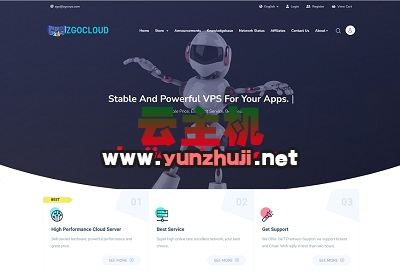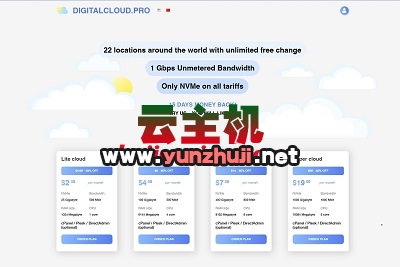ASP.NET 端口转发
在现代Web开发中,前后端分离的架构越来越普遍,前端应用通常托管在Node.js服务器上,通过Axios等工具访问后端API,有时前端和后端可能运行在不同的服务器或端口上,这就需要进行跨域请求,为了解决这个问题,我们可以使用反向代理来转发请求,本文将详细介绍如何在ASP.NET Core中实现端口转发。
什么是端口转发?
端口转发是一种网络技术,用于将来自一个端口的网络流量重定向到另一个端口,这在开发环境中非常有用,特别是在需要跨域访问资源时,通过端口转发,可以将对特定URL路径的请求转发到指定的内部服务,从而实现跨域资源共享。
为什么使用ASP.NET Core进行端口转发?
ASP.NET Core是一个高性能、模块化且跨平台的框架,非常适合构建现代Web应用程序,它提供了强大的中间件模式,可以轻松地拦截和处理HTTP请求,通过定义自定义中间件,我们可以实现灵活的请求转发逻辑。
如何实现端口转发
1. 创建检测约定URL的接口与实现
我们需要定义一个接口IUrlRewriter,用于检测URL是否有对应的前缀,并生成新的URL地址。
public interface IUrlRewriter
{
Task<Uri> RewriteUri(HttpContext context);
} 实现这个接口:
public class PrefixRewriter : IUrlRewriter
{
private readonly PathString _prefix; // 前缀值
private readonly string _newHost; // 转发的地址
public PrefixRewriter(PathString prefix, string newHost)
{
_prefix = prefix;
_newHost = newHost;
}
public Task<Uri> RewriteUri(HttpContext context)
{
if (context.Request.Path.StartsWithSegments(_prefix)) // 判断访问是否含有前缀
{
var newUri = context.Request.Path.Value.Remove(0, _prefix.Value.Length) + context.Request.QueryString;
var targetUri = new Uri(_newHost + newUri);
return Task.FromResult(targetUri);
}
return Task.FromResult((Uri)null);
}
} 2. 创建代理转发需要的ProxyHttpClient
创建一个独立的ProxyHttpClient,用于区分代理转发的HTTP客户端,方便后期添加日志或其他处理。
public class ProxyHttpClient
{
public HttpClient Client { get; private set; }
public ProxyHttpClient(HttpClient httpClient)
{
Client = httpClient;
}
} 3. 创建代理转发的中间件
创建代理转发的中间件ProxyMiddleware,中间件的主要功能是拦截访问,检测前缀,并进行转发。
public class ProxyMiddleware
{
private const string CDN_HEADER_NAME = "Cache-Control";
private static readonly string[] NotForwardedHttpHeaders = new[] { "Connection", "Host" };
private readonly RequestDelegate _next;
private readonly ILogger<ProxyMiddleware> _logger;
public ProxyMiddleware(RequestDelegate next, ILogger<ProxyMiddleware> logger)
{
_next = next;
_logger = logger;
}
public async Task Invoke(HttpContext context, IUrlRewriter urlRewriter, ProxyHttpClient proxyHttpClient)
{
var targetUri = await urlRewriter.RewriteUri(context);
if (targetUri != null)
{
// 发送请求到新的目标地址
var response = await proxyHttpClient.Client.SendAsync(new HttpRequestMessage(new HttpMethod(context.Request.Method), targetUri));
// 将响应写回原始请求者
context.Response.StatusCode = (int)response.StatusCode;
using (var responseStream = await response.Content.ReadAsStreamAsync())
{
await responseStream.CopyToAsync(context.Response.Body);
}
}
else
{
await _next(context);
}
}
} 4. 配置中间件管道
在Startup.cs文件中,配置中间件管道以使用我们定义的ProxyMiddleware。
public void Configure(IApplicationBuilder app, IHostingEnvironment env)
{
app.UseMiddleware<ProxyMiddleware>();
// 其他中间件配置...
} 示例代码
以下是一个完整的示例代码,展示了如何使用上述组件实现端口转发。
Startup.cs
using Microsoft.AspNetCore.Builder;
using Microsoft.AspNetCore.Hosting;
using Microsoft.Extensions.DependencyInjection;
using Microsoft.Extensions.Logging;
using System;
using System.IO;
using System.Threading.Tasks;
using Microsoft.AspNetCore.Http;
using Microsoft.Extensions.Logging.Abstractions;
using Microsoft.Extensions.Options;
using Newtonsoft.Json.Serialization;
using Microsoft.AspNetCore.Mvc.Formatters;
using Microsoft.AspNetCore.Mvc;
using System.Net.Http;
using Microsoft.Extensions.DependencyInjection.Extensions;
public class Startup
{
public Startup(IConfiguration configuration)
{
Configuration = configuration;
}
public IConfiguration Configuration { get; }
public void ConfigureServices(IServiceCollection services)
{
services.AddMvc();
services.TryAddSingleton<IHttpContextAccessor, HttpContextAccessor>();
services.AddLogging(builder => builder.AddConsole());
services.AddScoped<IUrlRewriter, PrefixRewriter>();
services.AddScoped<ProxyHttpClient>(provider => new ProxyHttpClient(new HttpClient()));
}
public void Configure(IApplicationBuilder app, IHostingEnvironment env)
{
if (env.IsDevelopment())
{
app.UseDeveloperExceptionPage();
}
else
{
app.UseHsts();
}
app.UseMiddleware<ProxyMiddleware>();
app.UseMvc();
}
} Program.cs
using Microsoft.AspNetCore;
using Microsoft.AspNetCore.Hosting;
using Microsoft.Extensions.DependencyInjection;
using Microsoft.Extensions.Logging;
using System;
using Microsoft.Extensions.Configuration;
using Microsoft.Extensions.PlatformAbstractions;
namespace AspNetPortForwardingExample
{
public class Program
{
public static void Main(string[] args)
{
BuildWebHost(args).Run();
}
public static IWebHost BuildWebHost(string[] args) =>
WebHost.CreateDefaultBuilder(args)
.UseStartup<Startup>()
.Build();
}
} 通过以上步骤,我们实现了一个简单的ASP.NET Core端口转发机制,这种机制可以帮助我们在开发过程中解决跨域请求的问题,同时也为微服务架构中的服务间通信提供了便利,希望本文能对你有所帮助!
小伙伴们,上文介绍了“asp 端口转发”的内容,你了解清楚吗?希望对你有所帮助,任何问题可以给我留言,让我们下期再见吧。

 云主机测评网
云主机测评网


















最新评论
本站CDN与莫名CDN同款、亚太CDN、速度还不错,值得推荐。
感谢推荐我们公司产品、有什么活动会第一时间公布!
我在用这类站群服务器、还可以. 用很多年了。